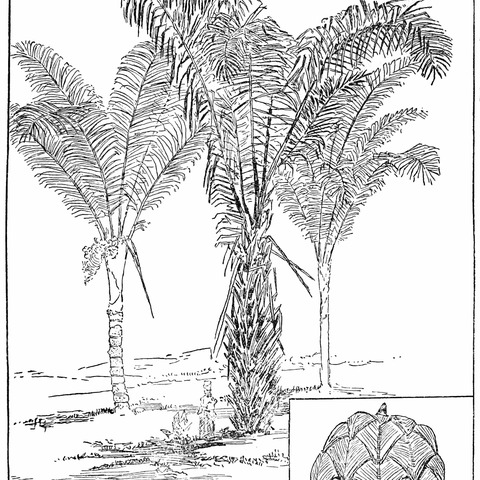A palm which produces suckers. The trunks are 3-9 m tall. There are pneumatophores or breathing roots between the plants. There can be roots on the trunk up to 1 m above ground. The fronds are 12-20 m long and arching. The fruit are shiny and brown. They are 7 cm long by 4 cm wide.

